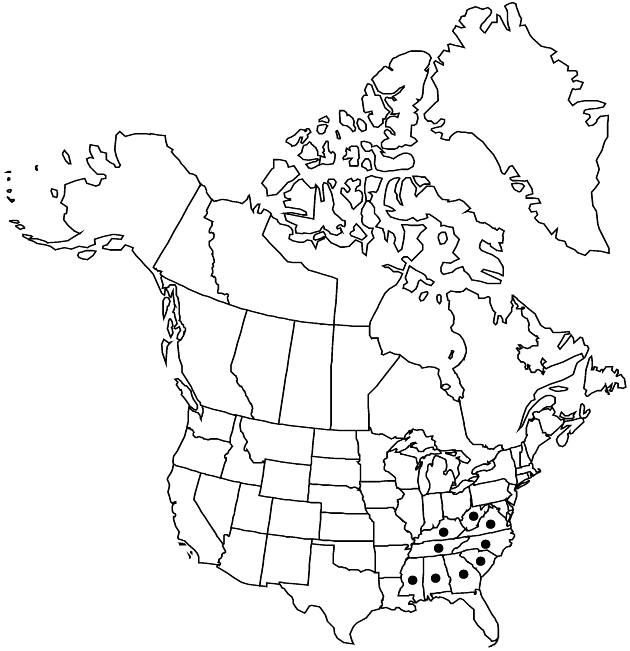Solidago curtisii
Fl. N. Amer. 2: 200. 1842.
Plants (20–) 40–90 (–100) cm; caudices woody. Stems 1–4, erect, straight, glabrous or moderately hirtello-strigose. Leaves: basal withering by flowering; proximal to mid cauline weakly petiolate or sessile, blades lanceolate to elliptic, (36–) 95–150 (–180) × (10–) 19–43 (–60) mm, margins serrate (with (3–) 8–20 (–36) teeth), faces glabrous or sparsely hairy, more so along nerves; distal cauline sessile, blades narrowly lanceolate to narrowly elliptic, (5–) 37–90 (–130) × (3.5) 5–18 (–34) mm, margins entire to sparsely serrate (0–9 (–14) teeth), faces glabrous or sparsely hairy, sometimes more pilose along nerves. Heads 20–800 in short axillary and terminal racemiform/paniculiform, non-secund arrays (2–) 8.5–38.5 (–65) cm. Peduncles 2–6 mm, moderately to densely finely strigose; bracteoles 0–3, linear-oblong. Involucres narrowly campanulate, (5–) 5.6–7 (–8) mm. Phyllaries in 3–4 series, strongly unequal, outermost 1–1.4 (–2) mm, innermost (2.5–) 3–4 (–4.4) mm, obtuse to acute, 1-nerved. Ray-florets 2–4 (–6); laminae (2–) 2.5–4 (–4.6) × 1–2 mm. Disc-florets 3–7 (–9); corollas mostly 2–3 mm, lobes 1–1.7 (–2.4) mm. Cypselae 1–2 (–3) mm, sparsely to moderately strigose; pappi (2–) 2.7–3.6 (–4.5) mm.
Distribution

Ala., Ga., Ky., Miss., N.C., S.C., Tenn., Va., W.Va.
Discussion
Varieties 2 (2 in the flora).
Solidago curtisii is similar to S. caesia and may be confused with robust, pressed and dried specimens of the latter if they are mounted such that the arching habit cannot be observed.
Selected References
None.
Key
| 1 | Proximal midcauline leaf blades broadly lanceolateand sparsely hairy | Solidago curtisii var. curtisii |
| 1 | Proximal midcauline leaf blades elliptic and moderately hairy 22b. Solidago curtisii var. flaccidifolia | > 1 |